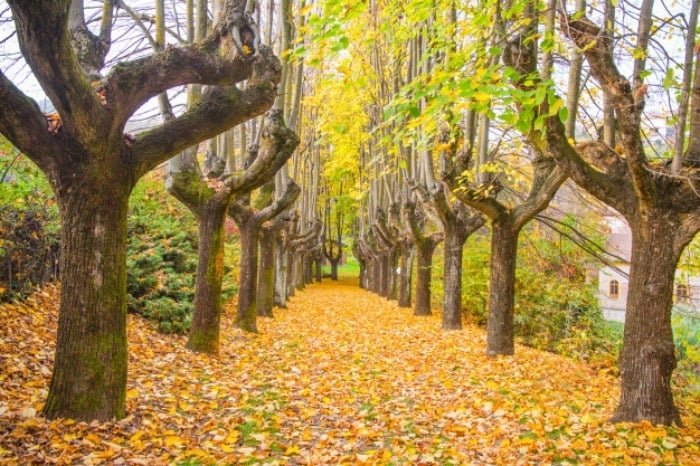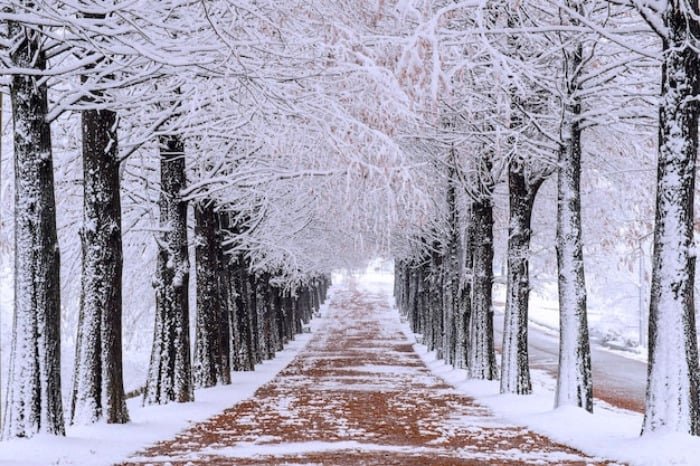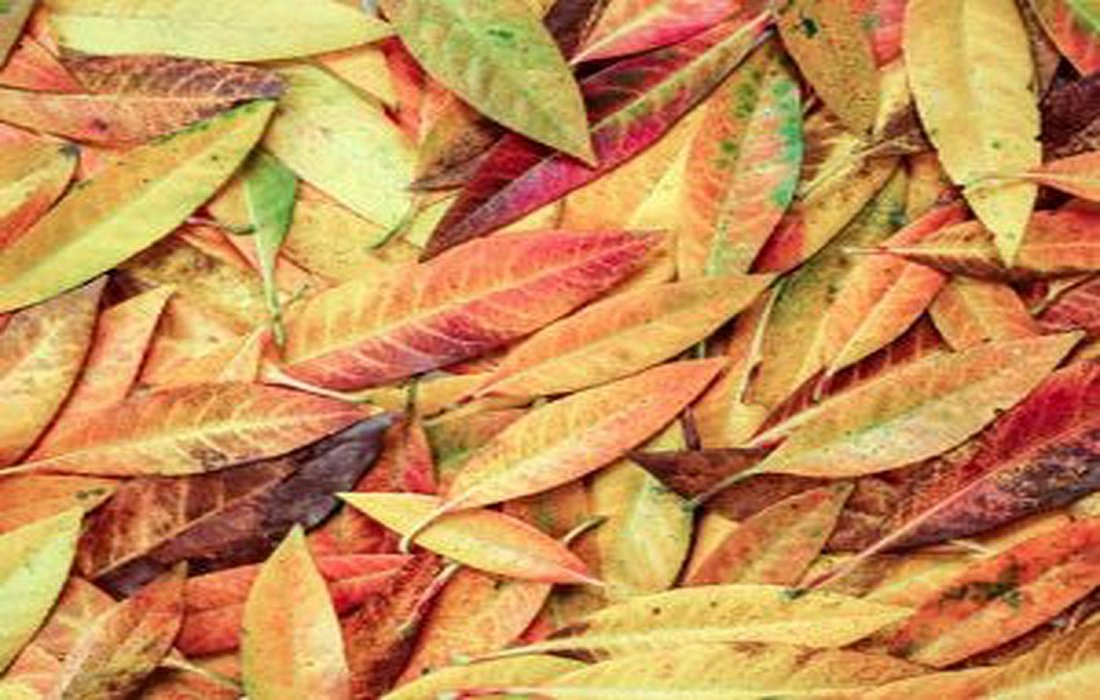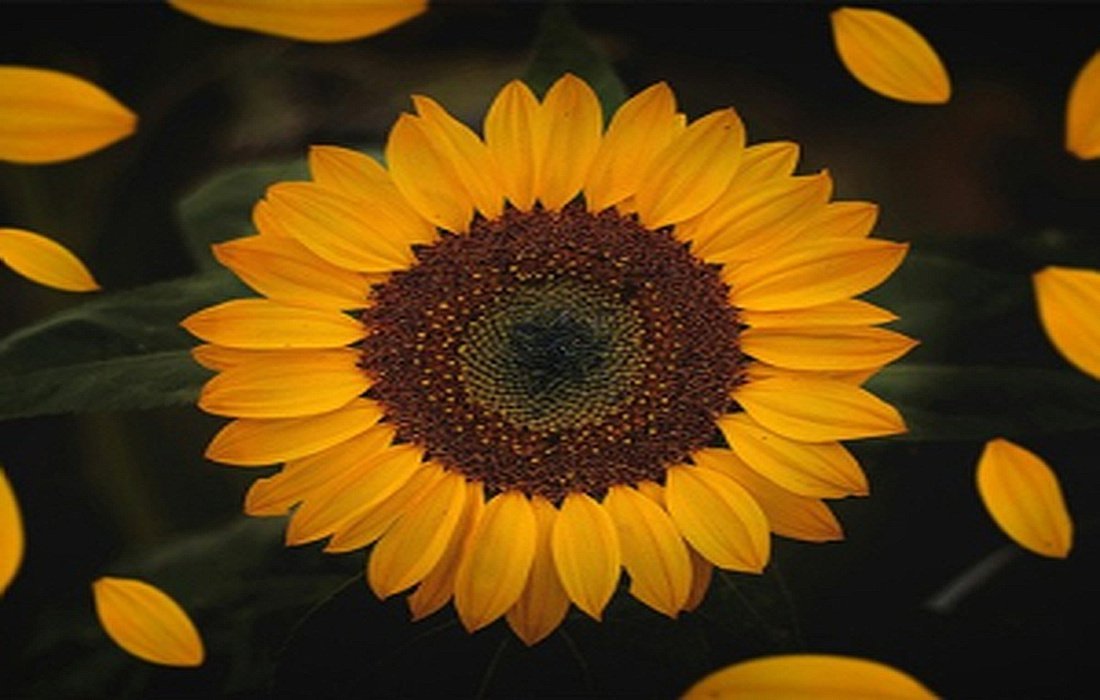Why Do Leaves of Trees Change Color and Fall?
This is an interesting question and it all relates to water. Leaves are the powerhouses of plants. They convert sunlight, air, and water into sugar, a process known as photosynthesis, which nourishes the plant.
Therefore, if there isn’t enough water around the plant, the leaves can’t perform their functions well and get damaged. This means they can’t support the plant’s growth and maintenance.
When this happens, plants must manage without this important organ. If this process occurs regularly or is related to a season, trees go into a state of dormancy, which is called leaf drop.

In fact, there are three common situations where leaf drop occurs.
1. Winter Leaf Drop
The first scenario, known as winter leaf drop, happens during dry and cold winters. In winter, especially in the Northern Hemisphere, there is little rainfall and much of the water in the ground freezes. Without water, plants lose moisture, and the more they face drought, winter leaf drop occurs, resulting in leafless forests.
Dropping leaves is a way for trees to protect themselves from the cold winter. If leaves remain on the trees without new ones growing in their place, the trees will have no means of producing the food they need.
Shedding leaves ensures the long-term survival of trees. As mentioned in the entertainment section of SelMagz, if trees don’t do this each year, the water within the leaf cells can freeze. Due to the expansion of water as it freezes, the leaves become cracked and disintegrate.As winter ends, the tree would have no new leaves to produce food, leading to its demise. The same situation occurs in summer as many leaves are damaged or eaten by insects. So, shedding leaves is a good opportunity for trees to start fresh and grow new leaves.2. Plant Drought
The second situation, referred to as plant drought, occurs due to dry conditions and in hot or warm climates. Many tropical or semi-tropical regions can experience significant dry seasons throughout the year with the least annual rainfall. During these dry seasons, forests dry out, and some trees lose their leaves.

3. Polar Leaf Drop
The third scenario, known as polar leaf drop, no longer occurs today but is thought to have happened over 80 million years ago, found in trees from Gondwana. Without sunlight, leaves cannot perform the process of converting sugars, so plants lose their leaves during polar winters.
The Reasons for Color Change in Tree Leaves
Before trees drop their leaves, they try to utilize as many beneficial components as possible. The first substance to be reused is chlorophyll, which is responsible for capturing light and gives leaves their green color.

As temperatures cool and days shorten, sunlight
decreases on trees. Consequently, the tree consumes the green particles in the leaves and stores them in the roots for winter. By removing chlorophyll from the leaves and absorbing it back into the plant, other chemicals and pigments in the leaves become visible.
This process of chlorophyll absorption is what causes leaves to change color from green to orange and yellow (due to carotenoid pigments) and even red or purple (due to anthocyanin pigments). Leaves change color when many pigments are absorbed by the plant.Once all the chlorophyll and other pigments have been reabsorbed, the leaves die. As they dry out, leaves turn brown and brittle, and eventually fall from the tree. Without leaves, plants enter a stateof dormancy
where the cycle begins again when new leaves start to grow.
Not All Trees Experience Leaf DropNot all trees experience leaf shedding at the same time. Generally, trees that shed their leaves go through several months of complete dormancy each year. These plants also require cold to fulfill their needs and prepare for future growth.Tropical trees remain evergreen and do not need cold. Such trees are called evergreens. However, it cannot be said that these trees never shed leaves; instead, they shed leaves gradually. Some trees can even exist in both deciduous and evergreen forms.Like some citrus trees, climatic conditions can also affect the growth habits of these plants. Although trees enter winter dormancy, biological processes beneath their hard exteriors never stop, and with the arrival of spring and the red rays of the sun, they begin to bud and blossom.Leaf Shedding in Trees

The Reasons for Leaf Drop in Trees
Winter Leaf Drop
The Reasons for Leaf Drop in Trees during Winter
Polar Leaf Drop







